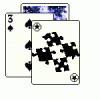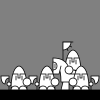Hey guys,
First some background on my game:
3d fantasy survival horror game
Complete openworld sandbox game (only transitions are from external to internal locations)
The game is not about looting or getting best gear even though crafting and gathering is a main game mechanic, its about atmosphere and story/lore from my own hand written story world that i have been creating for a while now.
The game emphasises exploration, i dont want the player going from a to b in a straight line and sometimes c, mystery is key.
Initially i was going full multiplayer 8+ players but creating anytype of openworld quest structure in a randomised terrain would have been insanely resource intensive on a team ?
My question is how would you like to play a survival horror game set in an open world, option 2 is do able with some creative editing without the worry of getting random generation correct, instead you can take your time precisely crafting it, not worry about too many quests also gives time for perfecting the core mechanics too.
I guess i spent most of my time writing my story world that i feel i have to put the whole thing in the game lol, im just so proud of it ?
One of the main game mechanics:
The world is darkness and within this darkness things live, the only way to survive is find light, if the light goes out prepare to fight (if your holding a torch it takes up one hand, so your damage/defence is lowered (beware bandits and other wildlife), though if you drop the torch and pick up your bow/shield/offhand the darkness will come, what do you choose?
OPTION 1
- Random terrain generation w/ hand created structures, quests and story
- No story
- Full multiplayer 8+
- Little to no npc's, no encounters???
This option seems pure survival, as it would offer no quests or bigger story to follow, its you and others vs the darkness.
OPTION 2
- Hand created terrain w/ hand created structures, quests and story
- Simple to no story
- Full multiplayer 4 to 8
- Little to no npc's and no encounters
Pretty much same as 1 but offers a more in-depth world to explore with more detailed atmosphere.
OPTION 3
- Hand created terrain w/ hand created structures, quests and story
- Simple to advanced story
- Coop 2 players
- Lots of npc's and encounters
This option would see the world really come alive and offer alot more story, full quests and atmosphere(with only 2 ppl giving the personal touch while keeping things straight forward )
OPTION 4
- Hand created terrain w/ hand created structures, story and quests
- Full story
- Single player only (but could be coop)
- Full npc's, random encounters, borders and factions
This is the full story world, the ultimate living world, think skyrim world but 100x more dangerous (more content, more encounters and really opening up the world to be explored and scared ?)
Last question, do you think 8 players would be too many for this type of game? The lower the players the more easier it is to implement more.
Any ideas or feedback is welcomed ?









